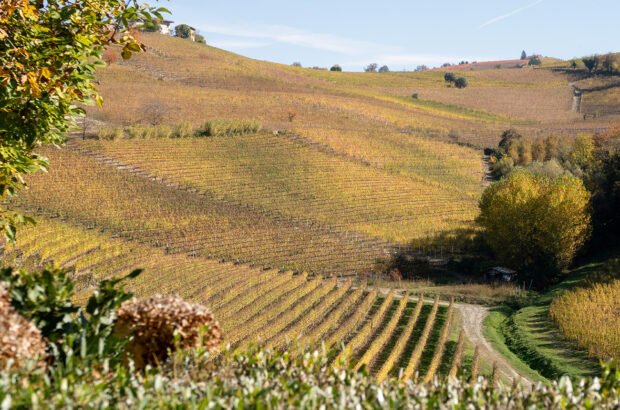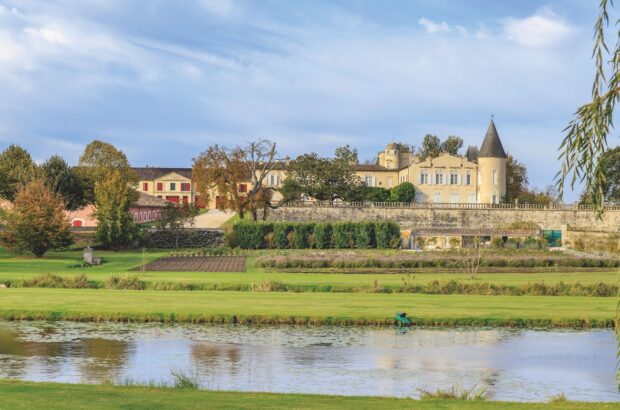Home to the world’s highest vineyard, this dramatic north Argentinian valley is a fascinating place for adventurous wine lovers to explore. Sorrel Moseley-Williams picks the top wineries to visit...
Quebrada de Humahuaca vineyards and wineries to visit
While Uco Valley and Cafayate are Argentina’s benchmark for making wine at altitude, the Quebrada is taking those extremes to new heights; it is home to the world’s highest vineyard at 3,329m above sea level. Granted Geographical Indication (GI) in 2015, just 12 years after the first commercial plantings, what the tiny 22ha Quebrada lacks in size it makes up for with flamboyant character.
The Quebrada’s winemaking story is both new and extreme, starting at 2,192m altitude in Chañarcito and ending 50km north and 1,137m higher near Uquía. When a law that permitted only tobacco and sugar cane plantations was relaxed in 2003, agricultural engineer Fernando Dupont saw opportunity.
Bodega Fernando Dupont
His pioneering Bodega Fernando Dupont is Quebrada’s largest producer, bottling 23,000 litres a year. Once his 5ha of Malbec, Syrah and Cabernet Sauvignon vines in Maimará were up and running, he enlisted winemaker Marcos Etchart of Bodega San Pedro de Yacochuya in Salta, who recalls: ‘Fernando planted vines on the mountain and went up, rather than down, to ensure he’d get grapes.’
The lofty view from the tiny wooden tasting room located at 2,400m above sea level is one of countless unique vistas in the Quebrada: to the east, zigzag brush strokes stain Mt Paleta del Pintor, while 3m-tall cardon cacti tower above vines. Fernando’s wife Amelia guides visitors around the vineyard and small winery, then through a tasting of wines such as the Pasacana blend, accompanied by local charcuterie and fresh goats’ cheese, and the ever-present breeze that keeps vines healthy.
Molino de Chicapa
While Etchart was the first oenologist to embark on the Quebrada adventure – he also consults at Claudio Zucchino near Uquía and Maimará’s Molino de Chicapa – he’s since been joined by an all-star winemaking cast.
This includes Lucás Niven at Amanecer Andino and Yacoraite; José Luis Mounier at Tukma; Gabriela Celeste at Viñas del Perchel; and Alejandro Sejanovich at Huichaira. And although the Quebrada’s portfolio is slim at 20 wines, it’s promising: 14 of the wines were rated in Tim Atkin’s 2018 Argentina Report and every one scored over 90 points.
Amanecer Andino
What started out as Alfredo González’s hobby a decade ago has turned Amanecer Andino, located a few kilometres from Purmamarca, into a family-run winery business. Cross the Río Grande via footbridge – the only access during summer when the valley’s main tributary floods with Andean snowmelt – to sample the winery’s range at the stone-coloured bodega that blends seamlessly into the mountains. Alfredo and his son, Alfredo Junior, pair locally sourced charcuterie such as llama hams with their eponymous Bonarda-Cabernet Sauvignon blend at a tank-side tasting.
Yacoraite
As well as working for Amanecer Andino, winemaker Niven joined forces with agricultural engineer Ezequiel Bellone Cecchin to assess Yacoraite, located at an altitude of 2,777m and owned by US-based economist Alejandro Izquierdo. The vineyard’s debut will be Mallku 2017, a 10% whole-cluster Malbec that will be available at Yacoraite’s mountain wine bar, which is due to open in late 2019 and will stock bottles from the Quebrada and the northwest.
Don Milagro
Niven also lends a hand at Purmamarca’s Don Milagro. Here, winemaker Gastón Cruz tends 80-year- old Criolla vines – said to be the oldest in the Quebrada – as his grandfather Milagro did before him, to make wine for February’s fiestas. From a tiny, humble winery in his back garden, in full view of the Siete Colores hill, he proudly shares Carnaval Torrontés 2017.
Viñas del Perchel
Heading north, Viñas del Perchel is located at an altitude of 2,650m and is another family concern. Now led by Mabel Vargas, only Dupont had contemplated winemaking here when her brother Javier planted 12 years ago. There was plenty of trial and error, thanks to its remote location, but the pros outweigh the cons. ‘The satisfaction is that we’re from Jujuy and we’re making wine here,’ she says.
Try Runa, an intense Malbec-Syrah blend, and the newly released Cactus, a 100% Tannat, on a short tour of the winery, whose facade sports a colourful, street art-style mural of a picker reaching to the stars. The winery is due to start construction of a larger bodega further up the mountain, to allow for more wine tourism in the future.
Claudio Zucchino
Meanwhile, Claudio Zucchino captures Jujuy’s vertiginous essence with an array of accolades. Not only is his Uraqui Minero Corte A 2016 sourced from Finca Moya, considered the world’s highest vineyard, he also owns the highest winery and cellar, Mina Moya, housed within a disused mine where his father once worked, located at 2,750m and 3,700m altitude respectively.
The winding track up is breathtaking, but the view from the mine itself has to be seen to be believed: sipping his red blend with your head in the clouds, looking deep into the valley below, is an unforgettable experience.
Huichaira
The Quebrada’s future is as dazzling as the sunlight, according to Sejanovich, who is excited about Huichaira, a 4ha vineyard at 2,710m above sea level. Its first vintages, including a co-fermented Malbec- Cabernet Sauvignon-Syrah, were made at Amancer Andino in 2018, but there are plans to build a winery in 2019. ‘Exceptional quality and styles are being made in the Quebrada. There’s plenty to look forward to,’ he says.
Looking ahead, other new projects are on the craggy horizon: Sofía Pescarmona of Bodega Lagarde is set to plant 1ha next to the Museo en los Cerros photography museum in Huichaira, while Casa Colorada at 3,200m is the site of Niven and Bellone Cecchin’s next venture; some 20ha will be added next year.
As long as these boutique projects can offer visitors a way of sampling their wines in this unique terroir, the future is bright indeed.











